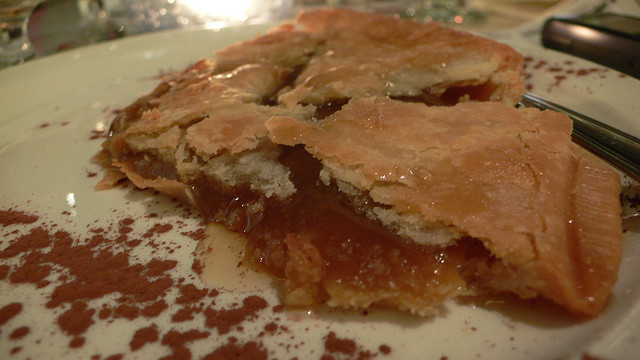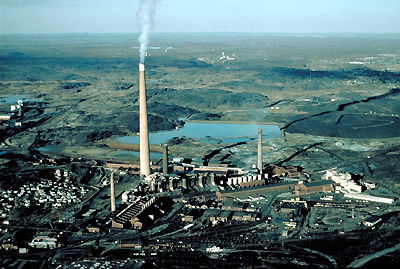Canada is the world’s leading producer and exporter of maple products, accounting for 75 per cent of the global market. In 2020, Canadian producers exported over 61 million kg of maple products, with a value of $515 million. The province of Quebec is by far the largest producer, representing 96.4 per cent of Canadian product exports. Maple syrup and maple sugar products are made by boiling down the sap of maple trees. World production of maple syrup and sugar is mainly limited to the Maple Belt, the hardwood forest stretching from the midwestern United States through Ontario, Quebec and New England and into New Brunswick, Nova Scotia and Prince Edward Island; however, British Columbia, Manitoba and Saskatchewan also produce some syrup.
History
The sweet sap of the sugar maple (Acer saccharum) was known and valued by Indigenous peoples of the Eastern Woodlands, including the Abenaki, Haudenosaunee and Mi’kmaq, long before the arrival of European settlers. Haudenosaunee tradition tells of the piercing of the bark of a maple and the use of its “sweet water” to cook venison, a happy accident that might have also established the culinary technique of maple-cured meats. Maple curing was a food preservation method practised by the Anishinaabe that allowed communities to keep food stores for winter months when food was scarce.
The Anishinaabe called the “sugaring off” period when sap was collected the “maple moon” or “sugar month.” The tradition of sugaring off became established in communities in the deciduous forests of North America and has survived to the present.
Techniques varied, but Indigenous peoples tapped trees by cutting v-shaped patterns into the bark or by inserting basswood or willow tubes into the tree. Birch-bark bowls were placed beneath the tap to catch the watery sap in early spring, when sap was made into syrup using different methods. Some left the sap out in the cold and threw away the frozen water that separated from the sugary syrup. Others boiled the sap down to syrup by adding hot rocks to birch-bark pots or boiled the sap in clay or metal kettles over a fire.
French settlers learned from the Indigenous peoples how to tap trees to obtain sap and how to boil it to reduce it to sweet syrup or sugar slabs to be stored for later use. The first settler accounts of maple sugaring were by André Thevet, who wrote of Jacques Cartier’s voyages, in 1557, and by Marc Lescarbot, who described the collection and “distillation” of sap by Mi’kmaq in 1606.
Maple sugar production began among settlers in the late 1700s and early 1800s. Colonists drilled holes into maples and fitted them with wooden spouts through which sap flowed and was collected in hollowed-out logs. The sap was transported to a sugar shack (alternatively sugar house, or cabane à sucre in French), where it was boiled down to syrup in large metal kettles over a fire. Over time, innovations in evaporation methods decreased the amount of time it took to boil down the sap. Improvements were also made in the way sap was tapped and transported from trees to the sugar shack.

Harvesting Maple Sap
In the fall, the sugar maple lays down concentrated sugars in the rays of the tree (groups of cells that carry and store nutrients). These sugars mature during winter and are harvested while the frost is still in the ground. The sap flow is stimulated in spring as the days become warmer and temperatures rise above 0°C during daylight, followed by below-freezing nights. Within the tree, positive pressures created by temperatures above 0°C produce a natural flow of sap. When a tree’s internal pressure is greater than the pressure outside, its sap will flow out of a tap drilled into the tree (or out of a broken limb or split in the bark). The clear sap rushes out of these taps and into the collection system.

As pressure in the tree drops during the day, the sap flow slows down and stops. Negative pressure is then found within the tree, and it begins to absorb water through its root system. The next day, as the tree warms up, positive pressure is restored, creating another flow. The process continues for about six weeks in early spring, between March and April. At the end of that time, the sap takes on a cloudy appearance, and the sugar content drops off dramatically. During the height of the sugaring season, sap contains between 2 per cent and 5 per cent sugar. Near the end of the season, sap contains less than 1 per cent sugar. During the maple harvest, a tree will release about 7 per cent of its sap. Tests confirm that this does no long-term damage to the tree. Many tapped trees are well over 100 years old.

There are various sap-gathering methods. Traditional bucket collection, although still used throughout the Maple Belt, is being replaced by a vacuum-tubing system that reduces labour and creates a more sanitary environment for collection. Usually, these systems transport sap directly from trees to one or many collection points, from which sap is transported for processing.
Once the maple sap is collected, the dilute raw material is reduced by evaporation to remove excess water; nothing is added. It takes approximately 30 to 45 L of maple sap (the typical amount of sap one tree produces over the course of the sugar season) to produce 1 L of pure maple syrup. The trees on 1 hectare of land can yield about 250 L of syrup.
Water can be removed from sap using various systems, from wood-fired evaporators to reverse osmosis systems that separate water from sugar molecules at high pressure.

Exporting Maple Syrup
In 2016, there were 11,468 maple farms in Canada and 47 million taps. Those farms produced 12.2 million gallons of syrup, accounting for 71 per cent of the world’s maple syrup. The province of Quebec, with 7,863 farms and 42 million taps, produced 11.2 million gallons in 2016, which represented 92 per cent of total Canadian production. The rest of the Canadian production came from New Brunswick (4 per cent), Ontario (3 per cent) and Nova Scotia (1 per cent). The value of maple products (sugar, butter and syrup) made during 2016 amounted to $487 million.
Canada’s share of the world’s maple production increased by over 225 per cent between 2006 and 2016. However, its share of world production fell from 80 per cent to 71 per cent between 2015 and 2016 due to rising competition from the United States.
In 2020, over 61 million kg of maple products were exported, for a value of $515 million. Quebec exports 95 per cent of Canada’s maple products. Canadian maple products are exported to over 68 countries. The most important export market is the United States, to which Canadian producers send 59.1% per cent of total exports. Other principal buyers are Germany (9.8 per cent), Japan (4.8 per cent), the United Kingdom (6.0 per cent), Australia (5.2 per cent) and France (4.4 per cent).
Marketing Maple Syrup
Maple syrup is a pure, natural sweetener. It has an abundance of trace minerals that are essential to good nutrition, including potassium, magnesium, phosphorus, manganese, iron, zinc, copper and tin, as well as calcium.
Maple syrup is graded according to colour, flavour and density; standards are prescribed by federal regulation. “Grade A” syrups are divided into four categories: golden colour and delicate taste; amber colour and rich taste; dark colour and robust taste; very dark colour and strong taste. If a syrup does not meet those grades, it is considered “Canada processing grade.” Maple syrup must be in the range of 66 to 68.9 degrees on the Brix scale, which measures sugar content in liquids. Anything less or more cannot be graded and sold as pure maple syrup (see also Agriculture and Food Policy).
In the early 1970s, the traditional buyers were large food companies. When the US Food and Drug Administration reduced the minimum volume of maple syrup that must be listed as an ingredient in products sold as “maple syrup” and “maple sugar” from 15 per cent to 2 per cent, sales plunged dramatically and the industry experienced a major crisis. Efforts were made to develop a new market aimed directly at the consumer. Growth in that market rejuvenated the industry. Today, US and Canadian grading standards are harmonized.
Maple syrup is still served mainly over pancakes and considered a condiment, though it is now used to prepare sauces, glazes and vinaigrettes or in marinades and in baking.
Supply Management in Quebec
Maple syrup production in Quebec is controlled by the Québec Maple Syrup Producers (QMSP), established in 1966. The QMSP manages the province’s supply of syrup, which can change from year to year due to uncertain weather conditions, increasing or decreasing the price accordingly.
An order from the federal government in the 1990s granted the QMSP authority over the sale, pricing and export of syrup. QMSP sets annual quotas for all producers. It also tries to level the price of syrup through its Global Strategic Reserve, two large warehouses in Laurierville and Saint-Louis-de-Blandford, Quebec. All the syrup in the province flows through these warehouses, where more than 60 million pounds of reserve maple syrup is held in barrels (the amount in reserve varies). In years when production is low, syrup from this reserve is introduced into the market to offset short supply, thereby lowering prices inflated by high demand. Not all maple syrup producers agree with QMSP’s control over supply management. Unhappy that they are required by law to work with a syndicate that controls their production, some try to circumvent the QMSP by selling their syrup on their own, which the QMSP considers illegal activity.
In November 2021, the QMSP announced that it would release 22.7 million kg of maple syrup from the Global Strategic Reserve. With increased demand for maple syrup and an average annual yield, the reserve would allow the QMSP to meet domestic and international demand for the product. To replenish the reserve and meet market demand, the QMSP is approving 7 million new taps.
Did you know?
From between 2011 and 2012, thieves stole approximately 2,700 tonnes of maple syrup from the Saint-Louis-de-Blandford strategic reserve. The stolen syrup was valued at approximately $18 million. (See also Great Canadian Maple Syrup Heist.)
Emblem of Canadian Identity
The saying “as Canadian as maple syrup” demonstrates the degree to which maple products and production are associated with Canadian identity. The leaf of the sugar maple, for example, is at the centre of the National Flag of Canada (see also Emblems of Canada). Maple products are commonly sold in tourist shops across the country and given as diplomatic gifts.
For Québécois and French Canadians in general, going to the cabane à sucre is a cultural practice that remains popular. Even at the height of Catholicism until the mid-1950s, when the sugar season coincided with Lent, a period of fasting and penitence before Easter, sugar shacks were popular places to celebrate the end of winter and the arrival of milder temperatures. Now, in the spring, people gather for le temps des sucres (maple season) on maple farms to eat a meal, listen to traditional music and eat taffy on snow (when maple syrup is boiled, turning it into a more concentrated consistency, and spread out to cool on snow). The traditional meal often includes ham, omelette, pea soup, baked beans, sausages, potatoes, pancakes and oreilles de crisse (crispy pork rinds), all dipped in maple syrup if wanted. The traditions associated to the sugaring off season were designated as an element of intangible cultural heritage by the Ministère de la Culture et des Communications du Québec in 2021.
In Ontario, children often visit sugar shacks on school trips or with their families in spring, where they learn how syrup is made and taste freshly made maple products, usually maple taffy.


 Share on Facebook
Share on Facebook Share on X
Share on X Share by Email
Share by Email Share on Google Classroom
Share on Google Classroom












